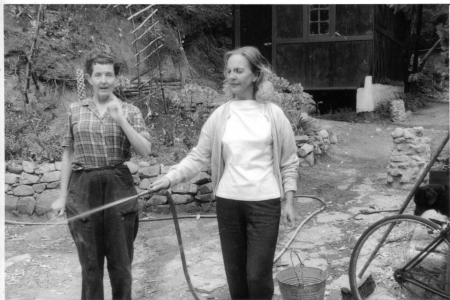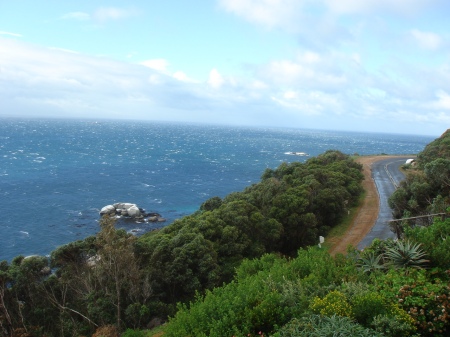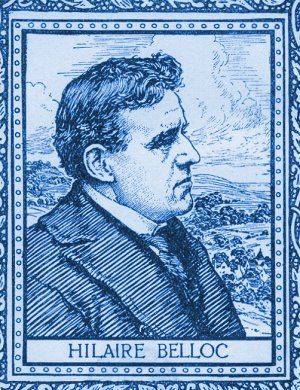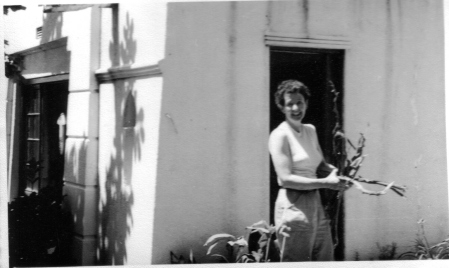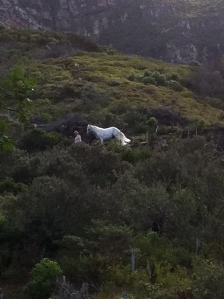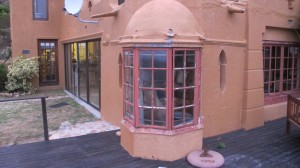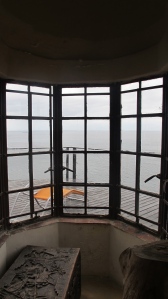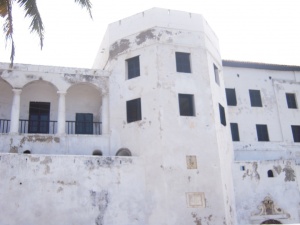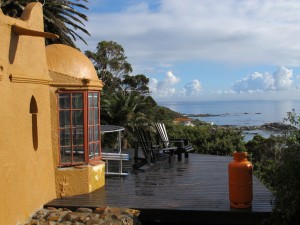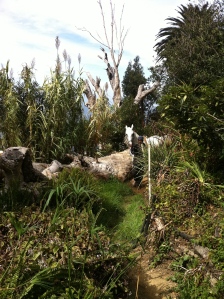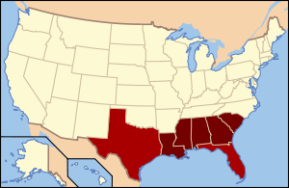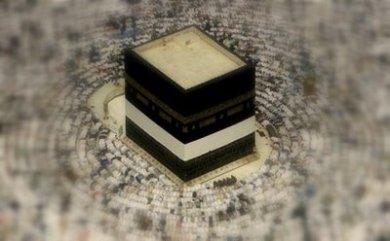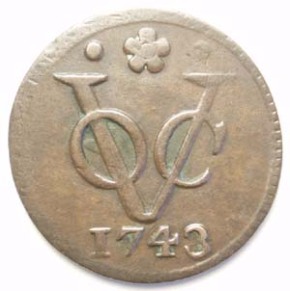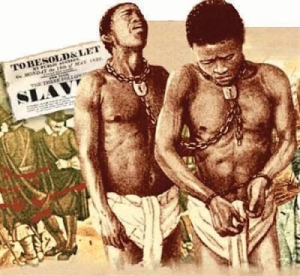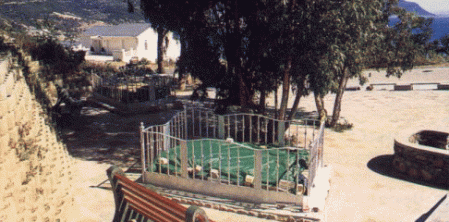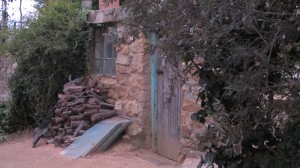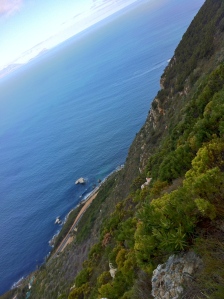The deed registry confirms that the fifth person to own this small piece of mountainside called “Blue Gums” was Jane Eliza Hasted. First there was P.E. Hugo and then there was the Reverend Leonard Green, who built the Stone Castle, which is now my home. When the Reverend died he left the property to the Boy Scouts who used it as a camp for a little over a decade. After that came Dorothy ____ who owned the place for about the same length of time.
Jane Eliza (left) and Dorothy at Blue Gums – mid 1960’s
Jane Eliza’s arrival on the scene was idiosyncratic and eccentric, and heralded a forty-four year alignment between person and place that, as far as Blue Gums is concerned, remains the benchmark for all who will follow.
This is how Jane Eliza herself remembered the moment.
“The very first time I came out in fading light, and a dubious jalopy, along the unknown mountain road it was like coming home. We came first up the outside path, the one hanging above the road, and that road itself hanging over the sea. The late afternoon was timeless on the waters and the great gum trees were still. So then I walked in and was home.”
“The road itself hanging over the sea”. When Jane Eliza first arrived it was a gravel road. (Note Spider Gum infestation on the sea side)
It took some negotiation for reality to align with Jane Eliza’s feelings and intentions. It appears, however, that Dorothy responded quizzically but positively to an offer to purchase that came from a stranger who had simply wandered up her path on a late afternoon. The property changed hands but Dorothy remained a regular guest and part-time resident for years to come. Still, it was not long before Blue Gums and Jane Eliza Hasted’s identities became inseparable. It is not surprising, given these events, that Jane Eliza regularly proclaimed that “Blue Gums chooses its own”.
This was a typically obscure literary reference on her part, this time to that prolific early twentieth century man of letters, Hillaire Belloc, a graduate of Balliol College in Oxford, who loved his college so dearly that he coined the phrase “Balliol chooses its own”.
One of Belloc’s poems includes the verse: “Balliol made me, Balliol fed me/ Whatever I had she gave me again”. One can readily imagine Jane Eliza saying the same about Blue Gums.
“Debating with Mr. Belloc is like arguing with a hailstorm” – H.G. Wells
Before we leave Hillaire Belloc behind for good, it is not possible to resist the temptation to point out that in addition to being a devout Catholic and a dogmatic creationist he regarded Islam as a “great heresy”. There is a rich irony here. The second-most legendary owner of Blue Gums, the Reverend Leonard Green, an ordained man of the cloth, builds a Muslim prayer niche in the north-west corner of his house. The most legendary owner of Blue Gums, Jane Eliza Hasted coins the phrase “Blue Gums Chooses Its Own” in deference to a man who called Islam a “great heresy”.
It is also thanks to Jane Eliza that many have come to believe that Blue Gums is haunted. It is she who wrote: “It is a haunted house we all think.” But how interesting it is that she continues by saying “Haunted mostly by an attitude of mind. It owns rather than is owned, and all the many folk it owns seem to think alike.”
Jane Eliza outside the Stone House at her beloved “Blue Gums”
It is almost time to ponder what those who have been and are currently owned by Blue Gums think of the invasive alien trees after which it has been named. On this topic it is unlikely that the many folk it owns will be found to think alike, for attitudes of mind are fickle things and what was considered acceptable in one generation, as South Africans ought to know only too well, may indeed be a great heresy in the next.
